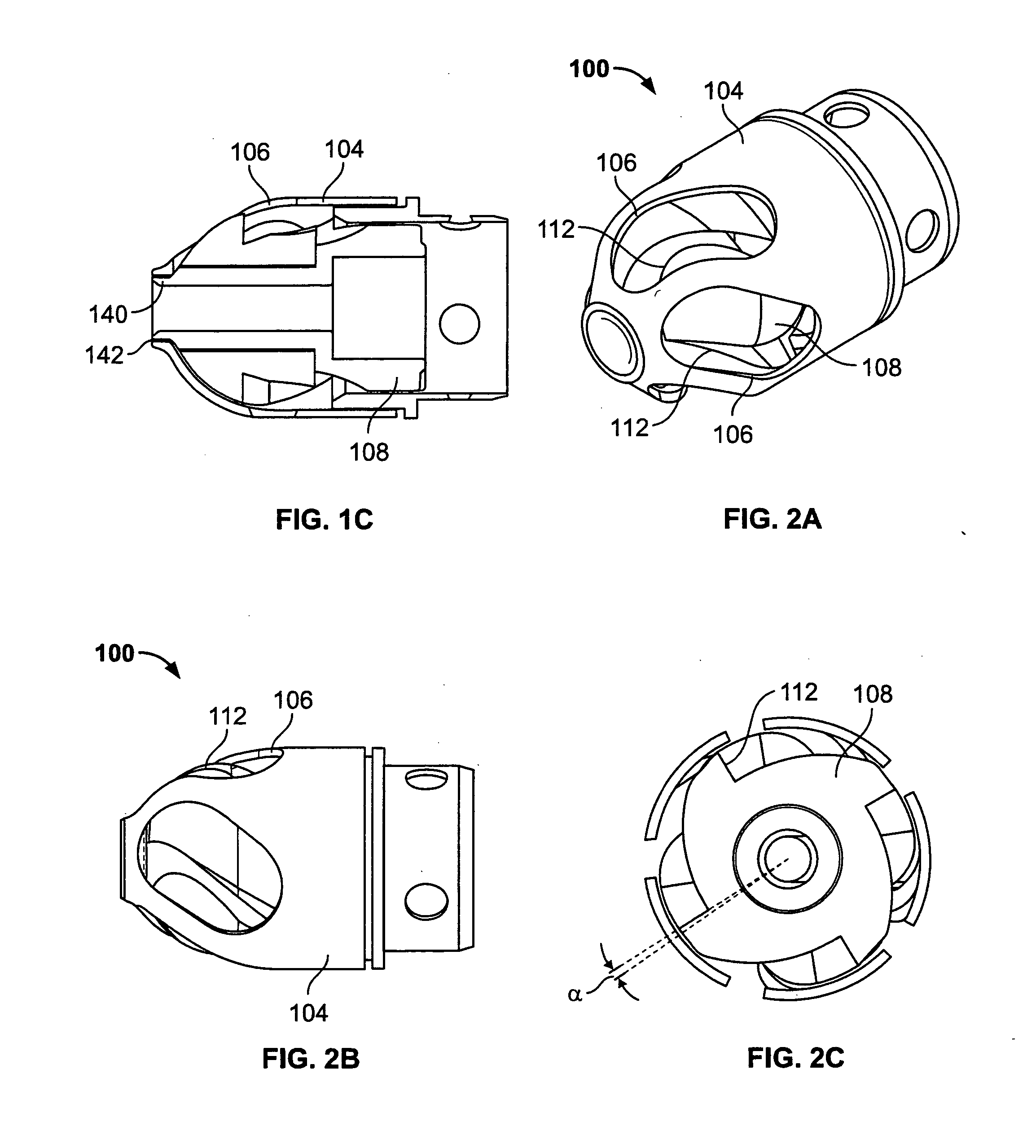Devices, systems, and methods for cutting and removing occlusive material from a body lumen
a technology of occlusive material and body lumen, which is applied in the field of treatment of occlusive body lumen, can solve the problems of unacceptably high restnosis rate, barotrauma to the vessel, and the embolization of a downstream vessel, and achieve the effect of safe, efficient and controlled shaving or grinding of material
- Summary
- Abstract
- Description
- Claims
- Application Information
AI Technical Summary
Benefits of technology
Problems solved by technology
Method used
Image
Examples
Embodiment Construction
[0035]Although the disclosure hereof is detailed and exact to enable those skilled in the art to practice the invention, the physical embodiments herein disclosed merely exemplify the invention, which may be embodied in other specific structure. While the preferred embodiment has been described, the details may be changed without departing from the invention, which is defined by the claims.
[0036]FIG. 1A illustrates an exemplary variation of a device 100 according to the present invention. As shown the device 100 includes a cutter assembly 102 affixed to a catheter body 120. As shown, the catheter body may be optionally located within an outer sheath 122.
[0037]FIG. 1B illustrates an exploded view of the device 100 of FIG. 1A. As shown, the cutter assembly 102 includes a housing 104 with a plurality of openings 106. A cutter 108 is located within the housing 104. The cutter 108 includes one or more flutes 110 each of which includes an edge or cutting surface 112. The cutter is coupled...
PUM
 Login to View More
Login to View More Abstract
Description
Claims
Application Information
 Login to View More
Login to View More - R&D
- Intellectual Property
- Life Sciences
- Materials
- Tech Scout
- Unparalleled Data Quality
- Higher Quality Content
- 60% Fewer Hallucinations
Browse by: Latest US Patents, China's latest patents, Technical Efficacy Thesaurus, Application Domain, Technology Topic, Popular Technical Reports.
© 2025 PatSnap. All rights reserved.Legal|Privacy policy|Modern Slavery Act Transparency Statement|Sitemap|About US| Contact US: help@patsnap.com



